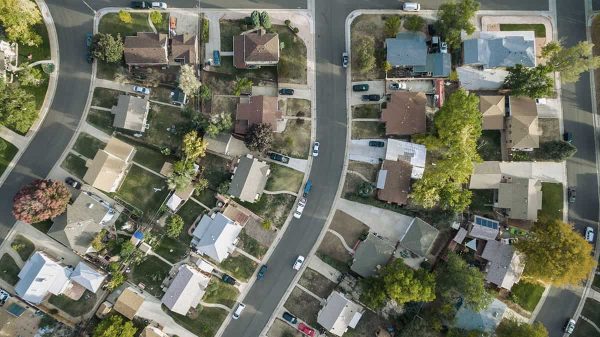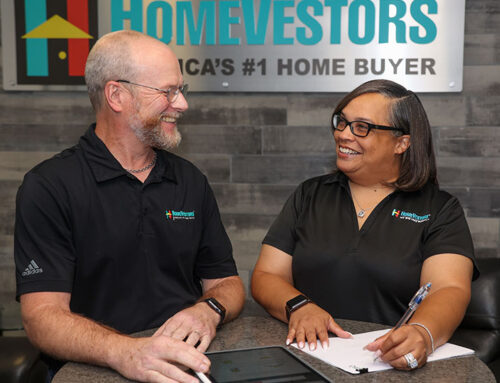
As another summer beckons, Cubs and White Sox fans pin their hopes on one of those teams hoisting a World Series trophy in October. Baseball is in full swing (pun intended) and I get in the spirit of America’s national pastime by weeding out the baseball collectibles I’ve had for decades. At one time, I thought my baseball cards could be sold in the future to help pay for my sons’ college education. I guessed wrong. Counterfeiters and greedy card manufacturers sullied the market by creating phonies and printing billions of cards annually after 1979—making all but the rarest cards virtually worthless.
The news on my memorabilia front wasn’t all bad, though. My acquisition costs were low and after proving the authenticity of my more valuable holdings, I was able to sell some Ernie Banks and Luis Aparicio cardboard gold issues for a nice profit. It took some extra effort and a little patience but my strategy worked—not to the grandiose level I’d hoped for, but enough to make collecting worth my while.
Card collectors faced a perfect storm and Illinois home sellers might be in for a similar fate. Shaky market conditions in the Prairie State have industry analysts forecasting a downturn in home prices in 2018 and beyond. However, I sense opportunity and have set out to examine the best places to buy rental property in Illinois. Like I did with my collectibles, you may need to wait out the slump before the base hits start coming again. But, it will come sooner than later if you know where to look for the right investment opportunities.
Where Are the Best Places to BUy Rental Property in Illinois?
One person’s detriment usually becomes another person’s gain. Such is the state of the Illinois real estate market as property taxes rise rapidly, the economy stumbles, and residents flock outside state borders in search of greener pastures. As home prices stagnate, determined investors scour the market for undervalued homes and anxious sellers are happy to oblige, some competition for a good deal can be tough. Here are five areas that prospective rental property owners should scout out before stepping up to the plate.
Metropolitan Chicago
Two big hitters: the federal government and metro Chicago. Looking at the luxury market, I find it hard to begin without addressing how changes in the U.S. tax code will have an impact on high-end homes in Illinois and across the nation. Until 2018, homeowners had an uncapped mortgage interest deduction to help offset the cost of monthly principal, interest, maintenance, and utility costs. Legislation enacted in January 2018, now caps the amount of interest allowed to reduce taxable income at debt levels of $750,000. The new law could cause double-digit decreases in luxury condominium prices in upscale neighborhoods such as the Near North Side and Lake View. While the home interest revision won’t have an effect on residential business properties, opportunity may be had as affordability concerns cause homeowners to sell into a tumbling market. An increase in supply coupled with increased demand for rentals should provide a boost to return on investment (ROI) in Chicago high-rise units.
One solid measure of a rental property’s worthiness involves capitalization rates of Chicago’s cash flow investment properties. Cap rates look at a rental unit’s annual net income—gross rents less operating expenses that include insurance and taxes—and divides it by the cost of the property. Obviously, cap rates allow investors to compare one potential opportunity with another. In the Loop, where a few hundred homes list for $1 million or above, a 10% reduction in price spells a potentially good deal for investors who can manage the purchase and maintain the same level of rental income.
Like any other in-demand metro area, the Chicago market is a competitive one and buyers either need to be patient and wait for a correction or have the financial wherewithal to strike fast when an immediate opportunity presents itself. Serious high-end buyers need to develop tried-and-true lead generation strategies to sort out properties that yield optimal cap rates.
Edwardsville
One thing I’ve realized over the years is that real estate investing is a business and some rules need to be followed. I always try to look for rental properties in ideal locations—in good school districts with public transportation and a bustling business district. However, sometimes I’ve run across outliers. I’ve bought homes in neighborhoods that flew under the radar and sat more on the up-and-coming side of Chicago. I’ve scooped up deals in towns such as Edwardsville, which presents renters with a manageable commute to St. Louis while offering a small-town feel.
But, no matter where you invest in Illinois, the byproduct of the state’s economic woes follows. Greater financial burdens haunt residents who witness larger chunks of their income being exhausted by skyrocketing real estate taxes. Those taxes are growing much faster than incomes in a state that has hundreds of billions in unfunded pension obligations.
What does all this economic tumult mean for rental investors? In towns such as Edwardsville, rising property, state, and local taxes have homeowners questioning whether they can sustain mortgage payments on homes that are steadily declining in value. While no one wants to hop aboard a sinking ship, income property investors have longer time horizons. The timely collection of monthly rents provides some stability to buyers who hold properties rather than enter and exit quickly while home prices sink.
In 2018, statewide median prices still sit well below highs achieved prior to the financial crisis of 2009. Potential first-time homebuyers, battered by tax increases, may delay purchases while many pre-retirees expedite plans to sell before prices decline much further. Piecing it all together, rental markets in towns such as Edwardsville thrive as demand heats up. Along the way, distressed homeowners offer investors a chance to buy at below-market values.
Winthrop Harbor
Like any other financial market, economic uncertainty creates skittishness among investors. Count me among the throngs who keep a blood pressure cuff in the bathroom. Granted, as I’ve built my real estate portfolio, I’ve diversified my strategies. I like to spread my holdings out across various geographic regions, attempting to avoid any cluster effect that might kill values and demand in a concentrated region.
In Illinois, Lake Michigan shoreline properties add a new wrinkle to metro and suburban market plays. Some of those areas—namely Winthrop Harbor—have seen property values buck the trend of statewide declines. When I culled statistics, I found that median home prices in Winthrop Harbor soared last year and the average days on market dropped by about one-third. It’s difficult to time the market but property values in Winthrop Harbor have been on the upswing since I’d purchased some small apartment buildings there. Any growth I can achieve adds a welcome bonus to the monthly income I receive through the term of my ownership.
Columbia
When escalating state and local taxes cripple the middle-class, homeowners rush to sell and housing supplies tend to rise, putting downward pressure on home values. The number of listings has risen in Columbia through the first quarter of 2018 but home values have bucked the trend, climbing slightly over the same time frame. That trend signifies a slight positive despite the fact that Columbia taxpayers expend about 15% their annual income paying state and municipal revenue bills. Illinois residents spend the highest percentage of their income on taxes than anywhere else in the United States. No one cheers high tax rates, but investors eyeing communities such as Columbia may wrest some opportunities from sellers who need to get out from under.
This can be an especially good opportunity in Columbia where amenities for renters abound. When choosing where to buy rental properties, I ask myself what would draw me to a particular town. Being that I raised three sons, my early concerns revolved around keeping them busy and keeping them well-educated.
Most young families think similarly—targeting rental properties that are surrounded by quality public and private schools. Columbia schools, ranging from K-12, rank high in comparison to other Illinois educational institutions. In terms of activity, young families and singles alike scout out neighborhoods that offer parks and recreational opportunities. Columbia has six public parks with playgrounds and walking trails and two of those spots feature pavilions for gatherings. For rogue Illinois sports fans, the St. Louis Cardinals play just across the border in Missouri, about a 25-minute drive from Columbia.
Peoria
I don’t enjoy witnessing sluggish economies anywhere I invest. Stagnant home and rental prices strangle my potential ROI. Unemployment hurts local business and causes misery among all affected parties. However, I’ve learned to separate my head from my heart through three decades of buying and renting homes. I won’t let emotion factor into equations involving dollars and cents. Besides, I’m a fan of a rebound market. Knowing that most depressed areas eventually experience some type of bounce-back, I’m willing to ladder my investment time horizons by flipping within a year, buying and holding for three to five years, and owning rentals for seven to 10 years. This is the strategy I employed in Peoria, a city where active listings are plentiful and median home values are affordable.
When global equipment manufacturer Caterpillar announced in early 2017 that it was ditching corporate operations in Peoria for Chicago, the bad news spread before the company’s CEO left the dais. I felt for those who would lose their jobs, yet I also sensed there would be a glut of homes flooding the market as displaced employees headed elsewhere. In this business, you can ride the waves of prosperous times but you’d also be wise to take a contrarian view, looking for undervalued properties in a beaten down geographic region. Realizing some profit might just take a little longer.
I believe the blow of losing a few hundred jobs will stun Peoria temporarily. However, Caterpillar still employs thousands of people and the city boasts attractions that include a symphony orchestra, a minor league baseball franchise, a zoo, and a couple museums. These are the institutions that draw out-of-towners and keep devoted, lifelong residents in place. So, I purchased some rentals on the dips and settled myself in for the long haul.
Finding a Winner Despite Market Pressures
In my early real estate investing ventures, I’d always thought the key to success was riding the hot hand. As time passed, I quickly learned that every financial market is cyclical and I needed to form winning strategies in both good and bad times. While I kept my eye on the national and economic conditions that might affect my investments, I tended to struggle with equally important issues such as finding great deals in promising neighborhoods. Truth be told, whether the market is high or low, you need good leads to stay afloat in the real estate investing business. That’s why I became a HomeVestors® franchisee. The nationally-known and trusted “We Buy Ugly Houses®” advertising campaign brings motivated sellers to the forefront and helps my real estate investing business not only stay in the game, but win.
Contact HomeVestors today and see how becoming a franchisee could help you win more home runs too.
Each franchise office is independently owned and operated.
Contact
"*" indicates required fields





